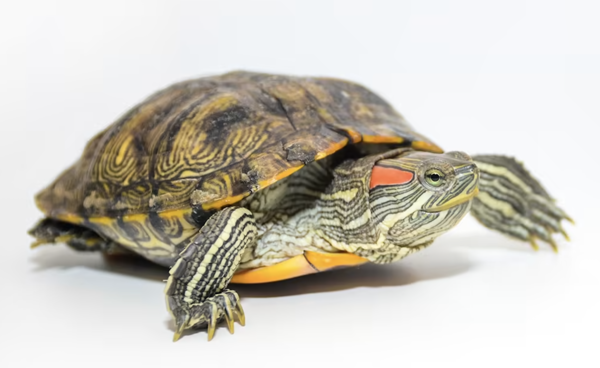Brazilian turtles, commonly known as Red-Eared Sliders (Trachemys scripta elegans), are a popular species of pet turtle. These turtles are hardy, but like any pet, they can face health issues that may lead to their decline. Understanding the signs of a dying turtle is crucial for pet owners who wish to act promptly and provide the best care. In this article, we will outline the top 10 signs that your Brazilian turtle is dying, along with advice on what to do if you notice these symptoms.

One of the early signs of a dying Brazilian turtle is significant lethargy or inactivity. While these turtles are known for being somewhat slow-moving, a healthy turtle should still be responsive to stimuli. If your turtle is no longer swimming or moving around its tank and seems lethargic for extended periods, it could be a sign of a health problem.
A turtle that refuses food can be a serious red flag. Loss of appetite in Brazilian turtles can indicate illness or stress. Common causes for this behavior include water temperature issues, shell infections, or internal parasites. If your turtle consistently refuses food for several days, it is time to assess its environment and health.
If you notice that your turtle is breathing abnormally, such as gasping for air, wheezing, or having difficulty swimming, it may be experiencing respiratory problems. Respiratory infections are common in turtles and can lead to serious complications if left untreated. Pay attention to signs of open-mouth breathing or excess mucus around the nose.
Sunken eyes in a Brazilian turtle are often a sign of dehydration or an advanced stage of illness. On the other hand, puffy eyes may indicate an infection or excessive fluid buildup. Either condition warrants a visit to a vet, as it may indicate a serious underlying issue.
Hiding and avoidance of social interaction may signal that your turtle is in distress or feeling unwell. Healthy Brazilian turtles are curious and social animals. If your turtle hides constantly, especially during the day when it is usually active, it could be a sign of illness or pain.
Shell issues such as discoloration, softening, or the development of cracks are serious warning signs. A healthy Brazilian turtle’s shell should be hard, smooth, and free of any lesions. Shell rot, which is often caused by bacterial infections, can lead to irreversible damage if left untreated. Always keep an eye out for signs of abnormal growth or damage.
Changes in your turtle's feces or urine can be indicative of health issues. Watery or abnormal feces, or a noticeable decrease in waste production, may signal problems with the digestive system. Similarly, changes in urine color or the frequency of urination could indicate kidney problems or dehydration.
If you notice that your Brazilian turtle has swollen limbs or its body feels unusually soft, this could be a sign of a fluid buildup or infection. Swelling in the legs, neck, or body could indicate that your turtle is suffering from an internal infection or injury. This condition may be life-threatening if not addressed quickly.
Discoloration of the skin or shell can be a sign of infection or illness. A Brazilian turtle's skin should generally be a consistent color with no blotches or unusual hues. If you notice any reddish, white, or yellowish patches, it may suggest a bacterial or fungal infection, or a nutritional deficiency that needs immediate treatment.
Brazilian turtles that float uncontrollably or tilt to one side may be experiencing problems with their buoyancy or internal organs. This is often caused by issues such as an imbalance in the turtle's buoyancy or an infection in the lungs. This behavior is often accompanied by other signs such as lethargy or loss of appetite.
If your Brazilian turtle shows one or more of these signs of distress, it's critical to take immediate action:
Consult a Veterinarian: A reptile vet can provide an accurate diagnosis and recommend the best course of treatment for your turtle.
Check Water Conditions: Ensure that the water temperature, pH level, and filtration are all appropriate for your turtle's needs.
Provide Proper Nutrition: Make sure your turtle is receiving a balanced diet, including the right amounts of protein, vegetables, and calcium.
Minimize Stress: Create a quiet and safe environment for your turtle to reduce stress, which can exacerbate health problems.
Understanding the top 10 signs of a dying Brazilian turtle can help you detect potential health issues early and seek appropriate care for your pet. Brazilian turtles are resilient animals, but like any pet, they require proper care and attention to thrive. By monitoring their behavior, appearance, and environment, you can ensure they lead a long, healthy life. If you notice any of the signs discussed above, don't hesitate to consult a veterinarian experienced with reptiles for guidance.
How to Properly Care for Your Brazilian Turtle
Common Health Issues in Red-Eared Sliders and How to Prevent Them
Understanding Your Turtle’s Shell: Maintenance and Care
By staying informed and proactive, you can significantly improve the chances of recovery for your Brazilian turtle and ensure it remains a happy, healthy companion for years to come.
animal tags: Emydidae
We created this article in conjunction with AI technology, then made sure it was fact-checked and edited by a Animals Top editor.